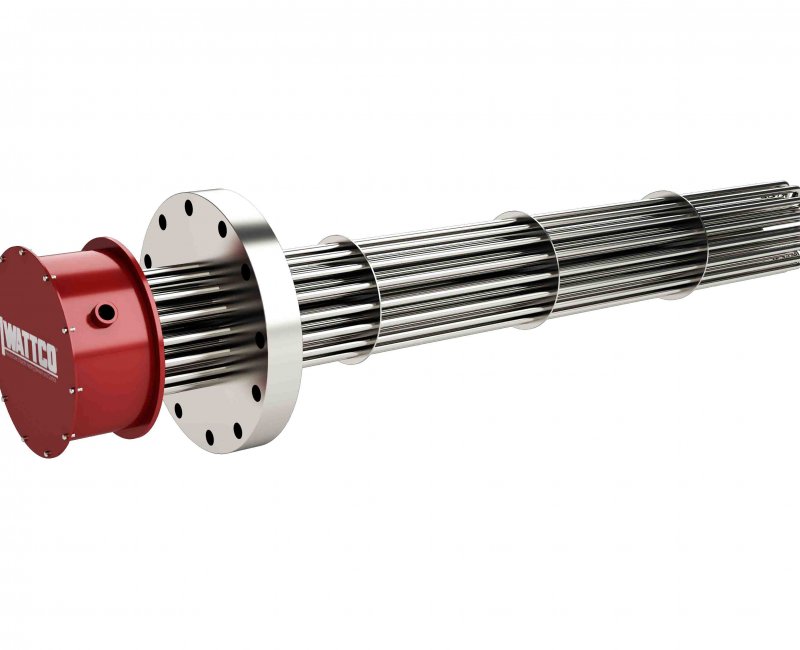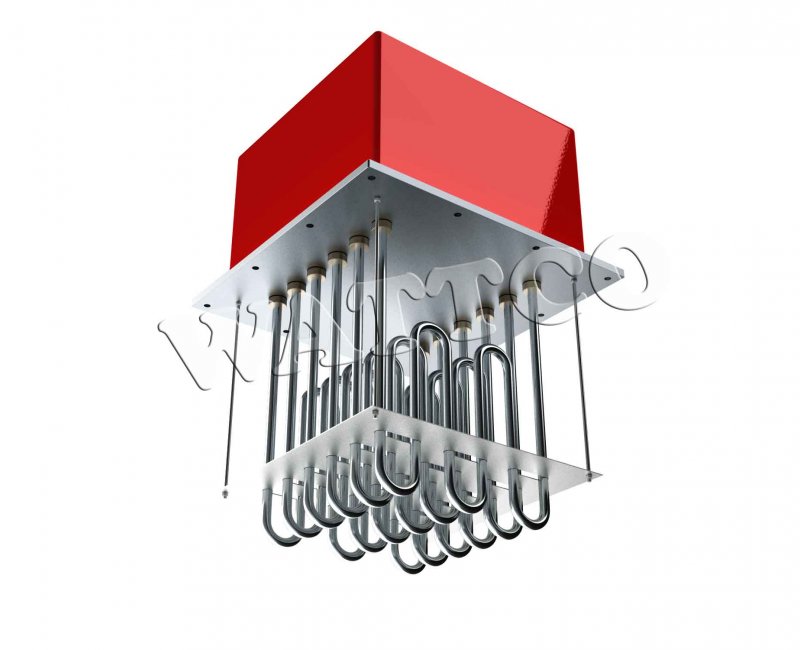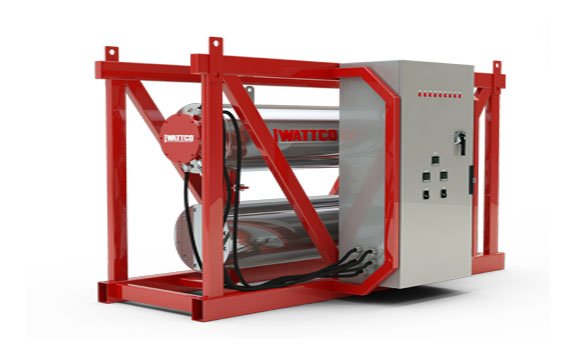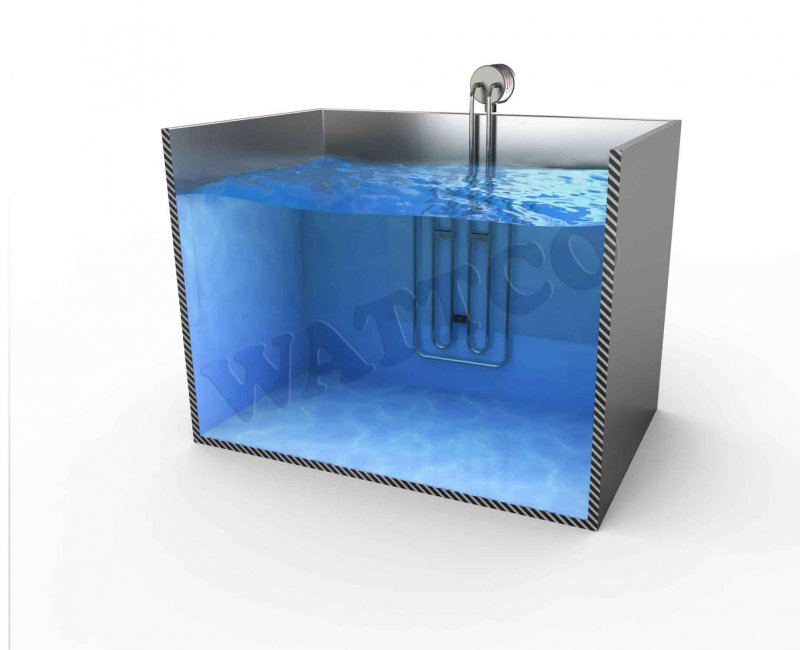Oil and Gas Industry
Petrochemicals require precision heating. Heaters maintain product viscosity in process applications and in harsh external environments. Immersion heaters play an essential role in the oil and gas industry. Downstream and upstream processes fill roles with different types of industrial heaters, including:
- Flanged Heaters
- Screw Plug Heaters
- Pipe Heaters
- Over-The-Side-Heaters
Flanged Heaters
Flanged heaters are often chosen in order to apply a relatively moderate heat source. The heat penetrates the heavy lubricant evenly across the containment. Bitumen processes often use flanged heaters to help with the extraction process.
Circulation heaters provide minimal (or gradual) heat to circuits of flowing liquid. The temperature of the liquid starts off at ambient temperature. But the residual heat that already exists in a well-insulated circuit is assisted with bursts of gradual cyclical heat from a heat source. In this case, a flanged immersion heater.
Immersion heaters are one of the most important systems in oil and gas heating processes. The oil and gas industry uses specific liquids, processing equipment and large tanks. Immersion heaters provide heat to each of these environments.
Through direct heating, companies are able to quickly attain the required temperature. Regardless of whether they are using pipe, circulation, over-the-side or any other heaters. They have a lot of importance in almost every industry. However, they are especially vital in processes where companies need fast heating.
Industrial immersion heaters are also helpful in keeping liquid below freezing temperature. This is common during the winter and in cold climates. Fluids freeze faster and maintaining their condition becomes difficult. Because of this, freeze protection is necessary.
Flanged immersion heaters maintain the temperature of fluids. Wattco heaters have ANSI rated flange. With bugle tubular elements or many hairpin elements.
A thermowell assists RTD, mechanical thermostat or thermocouple. It communicates temperature readings to the digital controller. The control panel is responsible to maintain the required temperature.
Screw Plug Heaters
Screw plug Immersion heaters are equipped with hairpin tubular elements for efficient heating. The elements are welded or brazed into pipe thread fitting. They are then connected with a threaded coupling of vessel or tank wall. These heaters are the easiest source to heat up liquids in small containers.
Digital controllers and mechanical thermostats are normally used with screw plug heaters. These tools help to sustain the target temperature with effectiveness and accuracy.
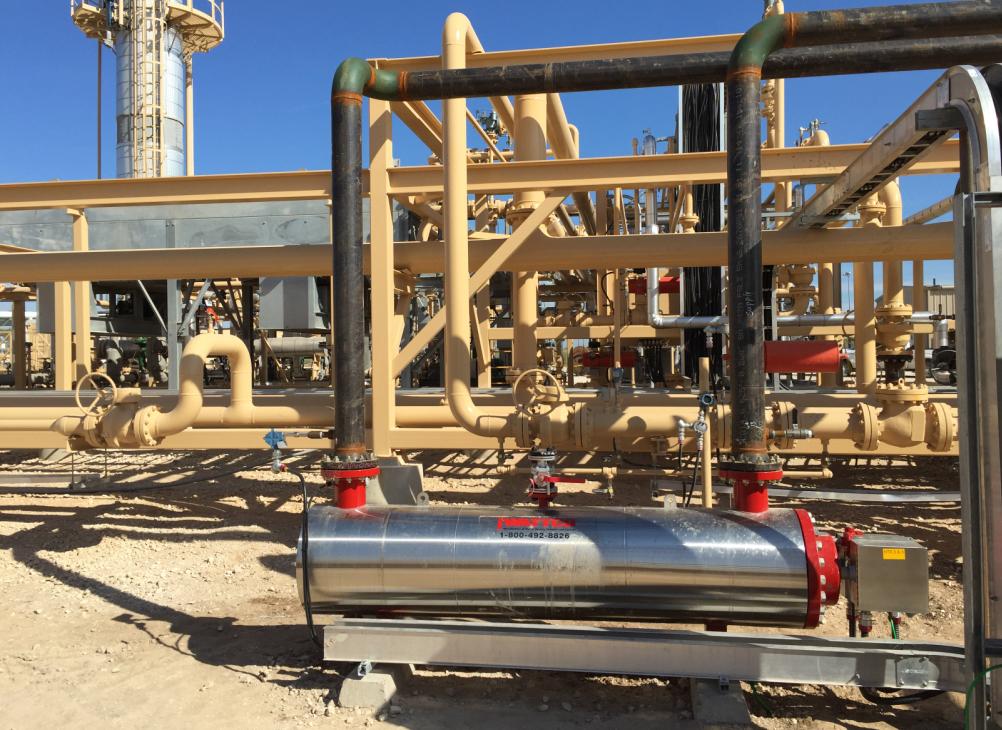
Pipe Heaters
Pipe heaters (drywell heaters) are designed to easily fit into standardized pipes. Standards are usually two or three inches schedule 40 NPS measured pipes. Here they can properly provide low watt densities for mediums like:
- Wax
- Corrosive fluids
- Tar
- Molasses
Drywell heaters do not directly heat mediums. Instead, they use the path from pipe to medium for heating. The process simplifies its maintenance because companies don’t have to empty them while replacing.
Pipe heaters are manufactured to withstand in extreme heat. This allows them to heat corrosive liquids, fluids with higher viscosity and heavy bunker fuel oils.
Over-The-Side Heaters
Over-the-side immersion heaters are famous for practical, commercial and economic purposes. Provided with water-resistant terminal housing, these heaters are available in different sizes and shapes to complement the requirements of the industries. They can be manufactured with a thermowell and multiple tubular elements that hold the temperature probe.
Over-the-side heaters can meet the standard economic feasibility of every project manager. So, they can be used in almost all industries according to the nature of use.
Precision Heating & Monitoring for the Oil & Gas Industry
Precise instrumentation such as a thermocouple or an RTD offers greater control. Users can reach and monitor target temperature quickly and efficiently.
Pairing control panels with high limit controllers help to prevent higher temperatures. Excessive temperatures can result from caking material that sticks onto the heating elements. Low watt densities assist with the preservation of heating elements. But a good control, that shuts off the elements in the presence of high temperatures, is an effective means to preserve both the heated medium as well as the heater.
Mentioned Products
Ideal for rapid direct heating of oil or other solutions. Durable alloys such as steel, stainless, titanium and Hastelloy for a wide of temperature ranges. Temperature controls and digital controllers make this product an optimum choice for the oil and gas industries.
OTS heaters are an excellent choice for open tanks. These are custom designed for your specific tank dimensions. Digital control panels (or a mechanical thermostat) for accurate temperature control are available. The mobility of these units allows users to use one heater for multiple tanks if required.

